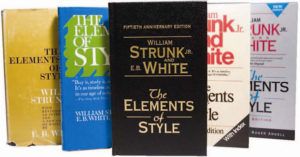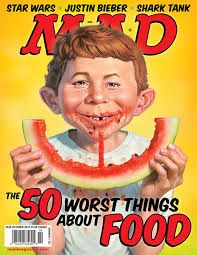Voice, Style, Tone: these tools of the writer can help you engage the modern reader. Ignore recent changes in reading preferences and reader’s needs at your peril!
Less Time; Less Bandwidth

Modern readers are strapped for time. Authors of the 19th and 20th centuries had the luxury of readers who often liked to work hard to understand a work. Working the brain served as entertainment.
Nowadays, outside of academics, readers want you to make it easy for them. They have less time to read. They often multitask and don’t focus in the same way. And they’re used to being entertained. They also often want to experience something, rather than just be fed instructional information without context, nuance and integration.
Today’s tips will help you fine tune your voice, style and tone to support the modern reader, her habits and her needs.
[bctt tweet=”5 Style Tips to Make Your Writing Easy for Readers to Understand Quickly” username=”LisaTener”]
-

matthew-payne-unsplash Pepper your writing with stories and examples that make information easy to grasp.
- Forget the fancy vocabulary words unless they truly add important nuance to the meaning. Instead, opt for everyday words and simplicity.
- Aim for one idea per sentence. Sentences that attempt to convey multiple ideas require too much parsing. Break up a long, involved sentence into multiple sentences for clarity and ease.
- When you refer to “it” or “them” make sure that it’s clear what “it” refers to. If the most recent noun is something else, consider replacing “it” or “them” with something more specific.
- Aim for shorter chapters and a shorter book. Generally, you’re more likely to attract modern readers with a 200 page book than a 500 page book!
Accessibility Means Tapping into More than Mental Learning
In a recent phone conversation with a client, I pointed out that her manuscript was largely instructional. She asked me, “What’s wrong with instructional?” Nothing. However, if a work is almost all instructional, it can wear the reader down. Pacing helps. Mix the instructional with the tips below.
[bctt tweet=”5 Ways to Help Readers Understand, Engage and Integrate” username=”LisaTener”]
-

Photo by Eye for Ebony on Unsplash Stories help readers take in more information and integrate it.
- Sensory detail helps bring the material to life.
- Examples help readers apply abstract information more readily.
- Exercises and journaling help readers “own” the information and apply it to their lives.
- Features such as sidebars (for quotations or scientific research, for example), tip lists, images, cartoons, QR codes that connect to video when scanned, white space and other features help break up the text (and the mental energy to process it) and provide a more textured, varied experience that’s easier on the brain.
[bctt tweet=”Let’s Define Terms: Writing Voice, Style and Tone” username=”LisaTener”]
What do we mean be your writing voice?
 Voice refers to the characteristics that come through your writing: your personality, the tone and style, how you engage your readers and more. Voice is not necessarily something we can always pin down and people experience voice differently and can harbor varied opinions about a writer’s voice. So, what follows is my take on voice.
Voice refers to the characteristics that come through your writing: your personality, the tone and style, how you engage your readers and more. Voice is not necessarily something we can always pin down and people experience voice differently and can harbor varied opinions about a writer’s voice. So, what follows is my take on voice.
You may write with an academic voice, which tends to have complex sentences, more abstract thoughts, passive voice and a preference to certain sentence structures.
Or you may write with a more conversational voice meant for a trade audience, with shorter sentences, more active verbs, and more varied sentence structures. A conversational voice can tend to have more humor or entertainment than an academic voice (though I am generalizing here).
What do we mean by your writing style?

You convey style by:
- Choice of words
- Sentence structure
- Metaphor, examples and other figurative language
- How you set up, structure and arrange sentences, paragraphs, sections, chapters, etc.
Your style may tend to be descriptive, narrative, prescriptive, or persuasive. But style is more than that. It’s
You may be familiar with the classic book by Strunk and White, The Elements of Style. In this brief and engaging book, two brilliant writers offer their years of experience and sage advice, still applicable over 50 years later.
What do we mean by an author’s tone?
Tone is your attitude to the work, how you express yourself. Is it serious? Playful? Scientific? Intellectual? Nurturing?
How do you convey tone?
- The words and phrases you choose
- Viewpoint (Are you writing in first person? third person?)
- Syntax (arrangement of words and phrases)
- How formal or informal the language (Is it conversational? academic?)
In choosing a tone, consider your audience. Not sure who your readers are? Here’s how to choose and understand your audience.
Let’s Hear From You!

Please share your comments and questions below:
- What else do you observe about modern readers, their needs and preferences?
- What tips do you have for using voice, style and tone to engage readers?
- Anything I left out or that you’d like to add?



 Experiment with syntax: try super-short sentences or paragraphs in one chapter. Play with rhythm. Write a prose poem in one chapter. Or think jazz in Paris, African beats in Morocco.
Experiment with syntax: try super-short sentences or paragraphs in one chapter. Play with rhythm. Write a prose poem in one chapter. Or think jazz in Paris, African beats in Morocco. He wondered though:
He wondered though:
 Ever feel like you’re in a slump with your writing? It needs something fresh? One trick I’ve found is to read something in a completely different genre. Then, if inspired, even write something short in a similar voice.
Ever feel like you’re in a slump with your writing? It needs something fresh? One trick I’ve found is to read something in a completely different genre. Then, if inspired, even write something short in a similar voice. Vint Virga, DVM
Vint Virga, DVM Kimber Simpkins
Kimber Simpkins

